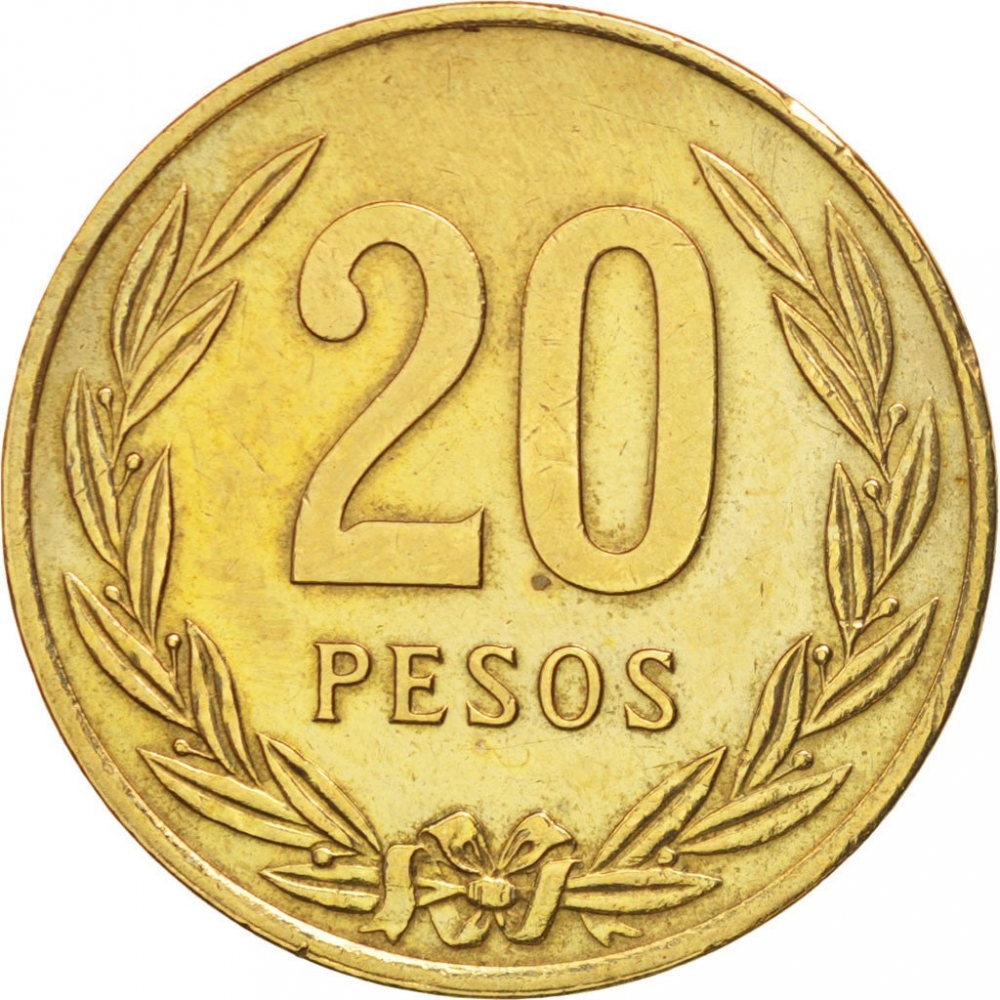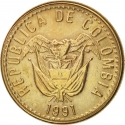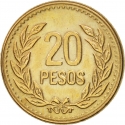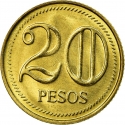You are about to finish your registration. Please check your mailbox (including spam folder). There should be a letter with a confirmation link. Check setting to make sure that your e-mail address is correct.
Send letter againDescription
1985 and 1988 coins exist with large and small dates.
Obverse

|
Poporo Quimbaya, date below. REPUBLICA DE COLOMBIA 1985 |
|---|---|
Reverse

|
Denomination within wreath. 20 |
| Edge |
Characteristics
| Material | Aluminium Bronze |
| Weight | 6.2 g |
| Diameter | 25 mm |
| Thickness | 1.75 mm |
| Shape |
|
| Alignment | Coin |





